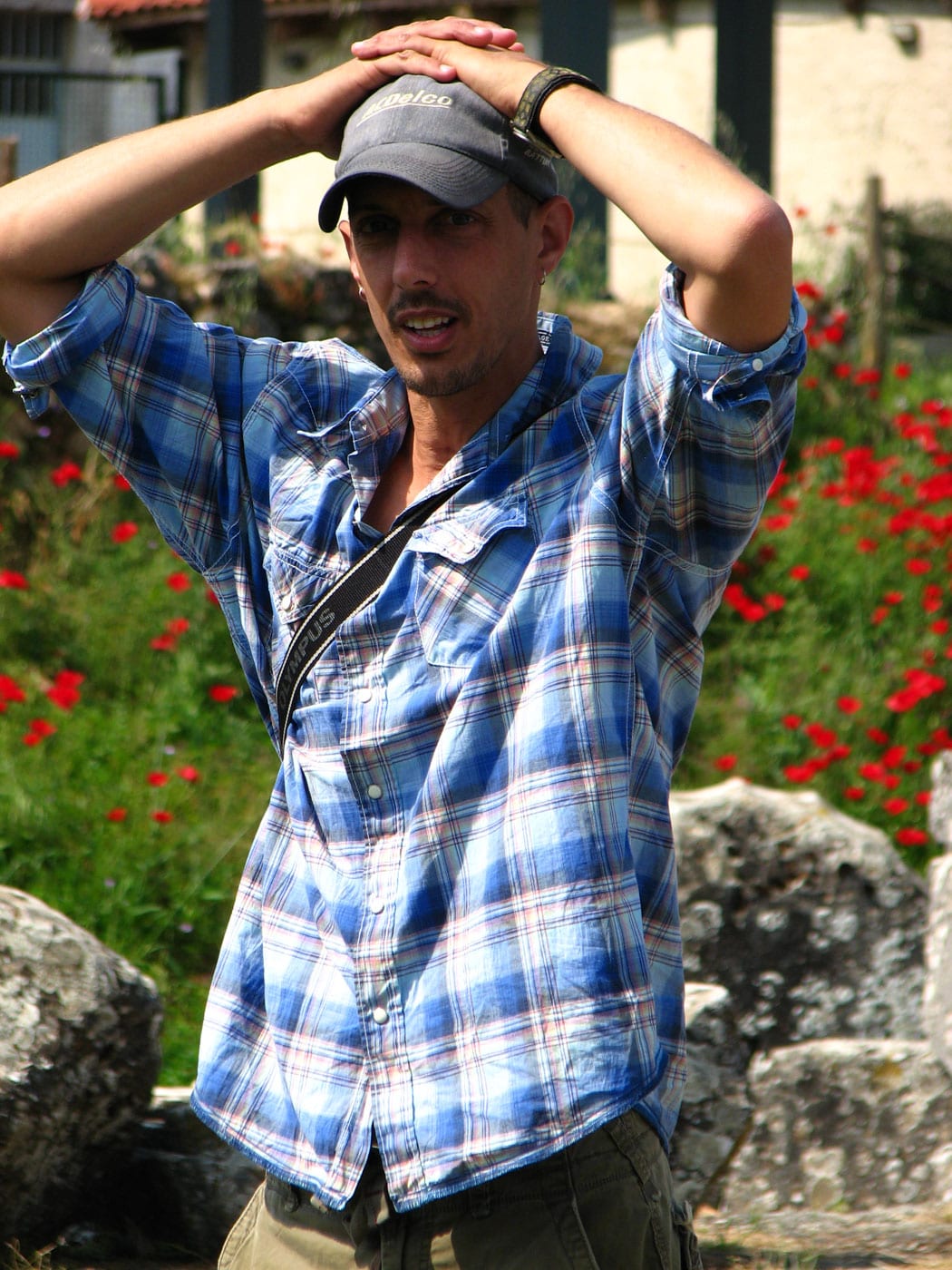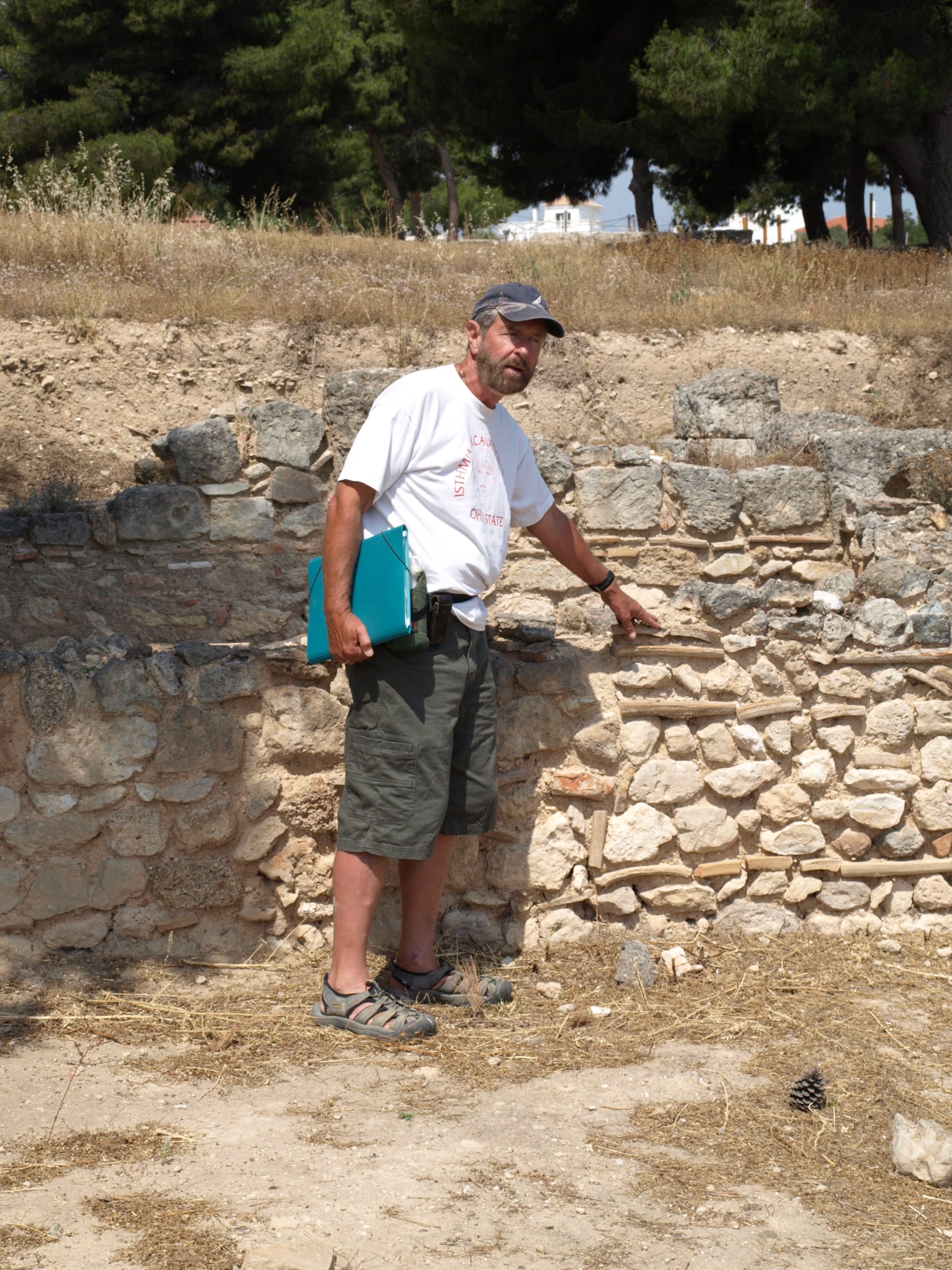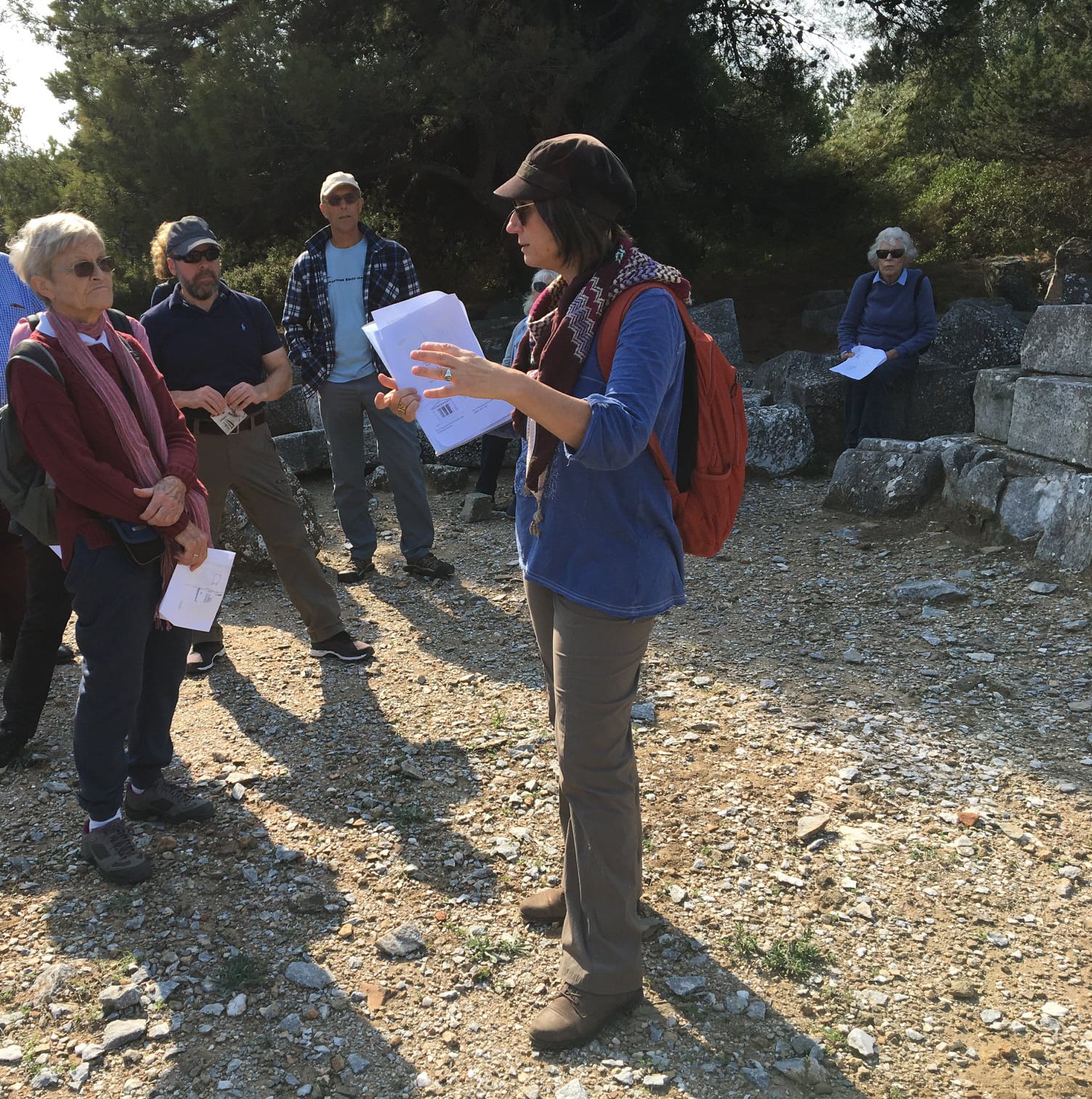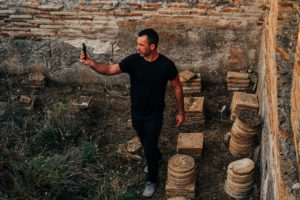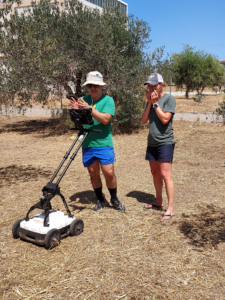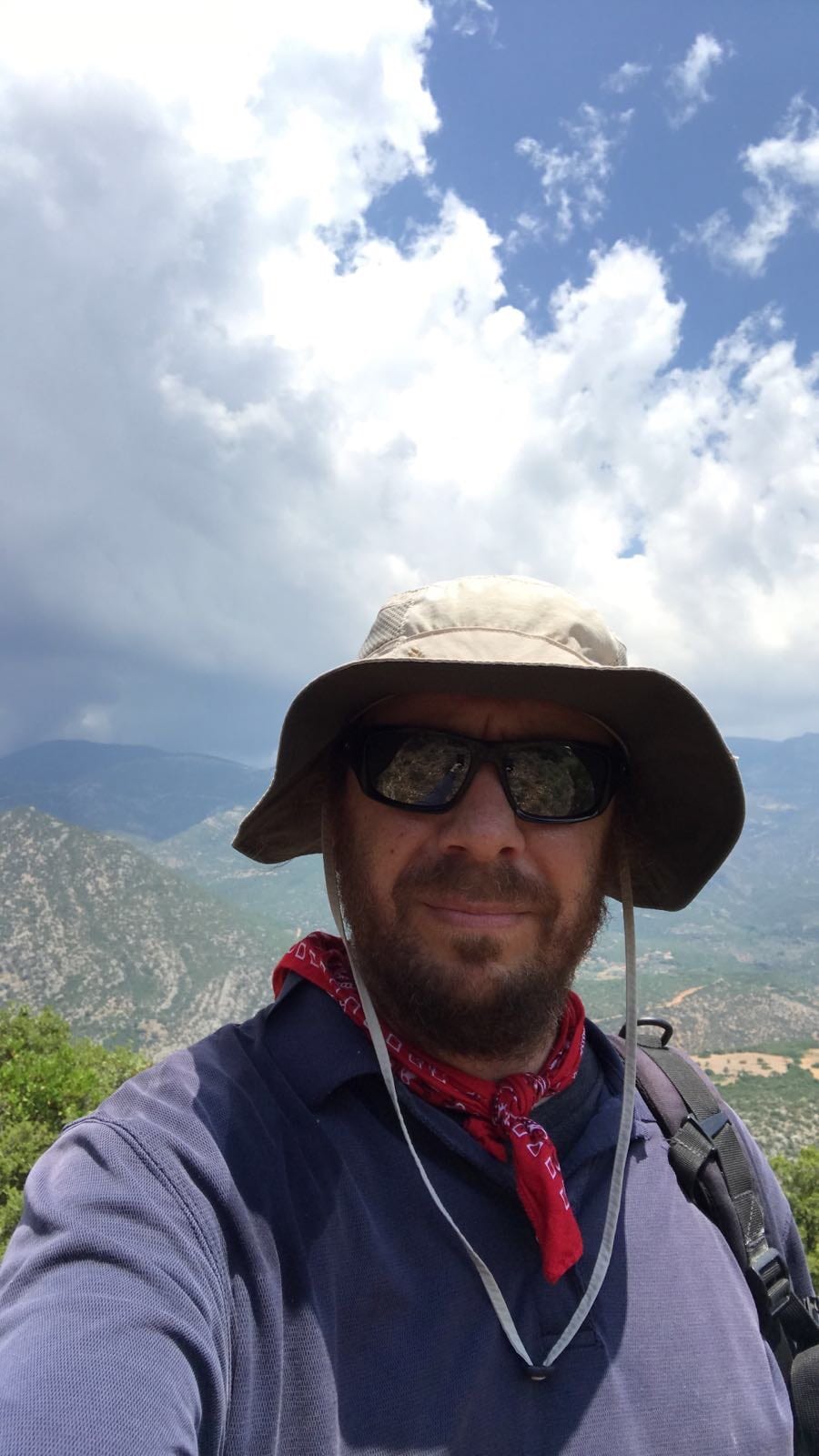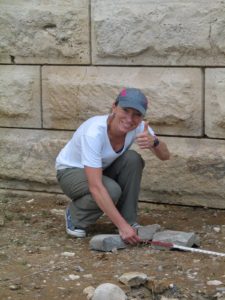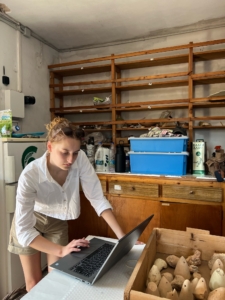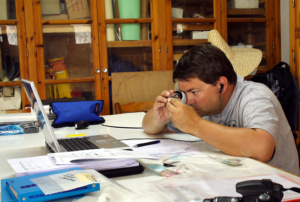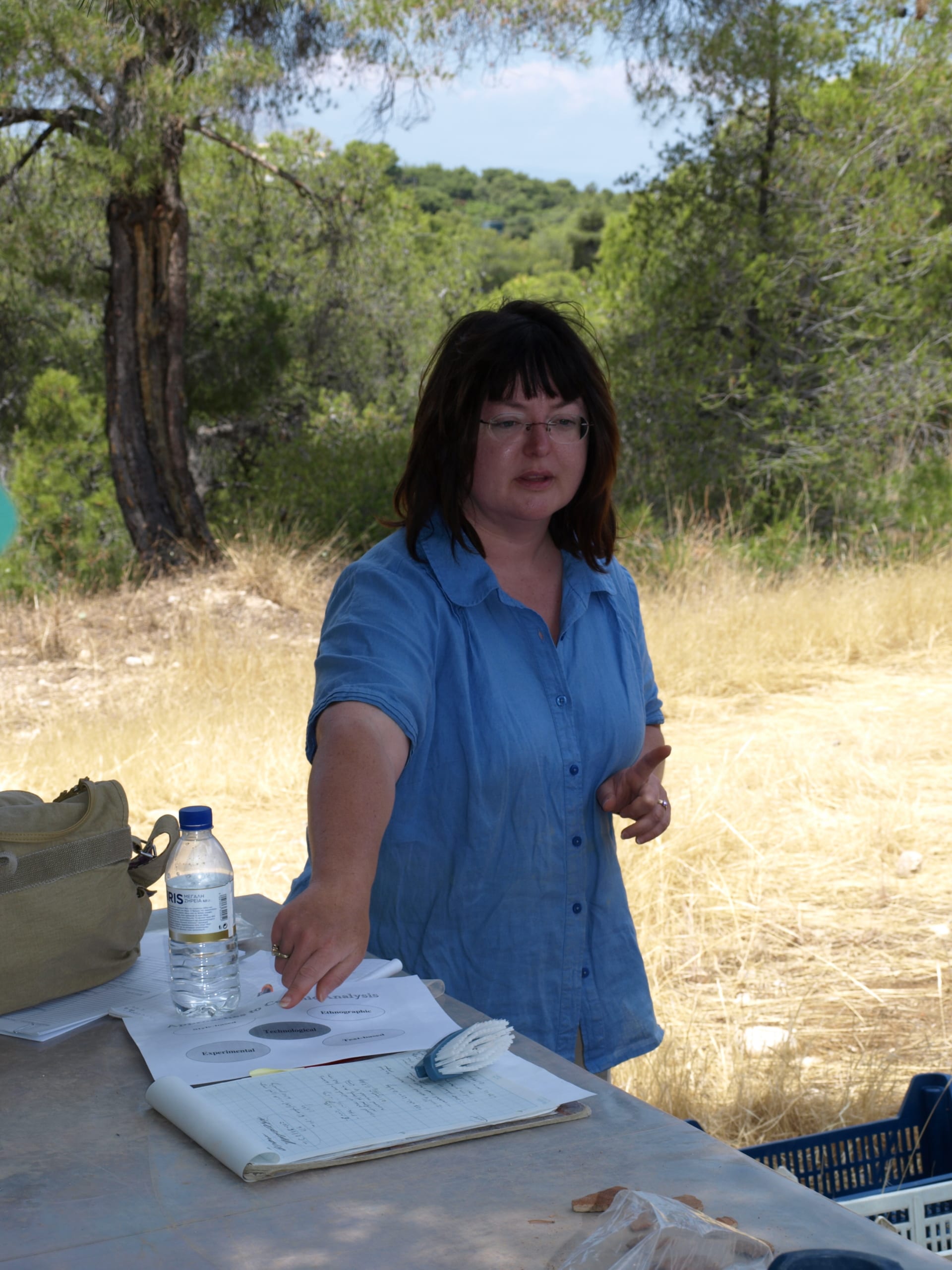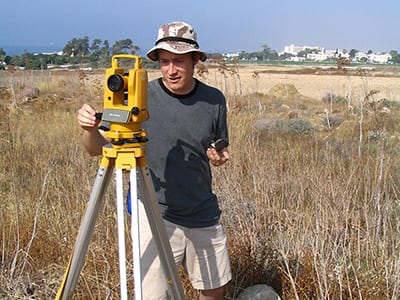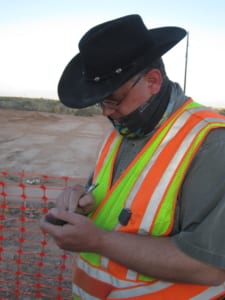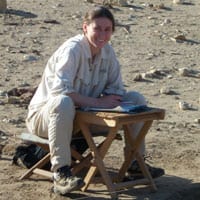Director
Jon M. Frey is Associate Professor at Michigan State University who specializes in classical archaeology and digital archaeology with a research focus on architectural reuse in the post-classical eastern Mediterranean. He has been involved in the work at the site of Isthmia since 1993 and has conducted summer field work and study at the site since 2004. As field coordinator for the OSU Excavations at Isthmia (2006-2020), he oversaw all aspects of work and directed an NEH funded effort to build an online digital archive called ARCS (Archaeological Resource Cataloging System) of all documents stored in the project archives. His publications and presentations about the work at the site include a monograph on Late Roman spolia (2015), which examines the early Byzantine fortification wall, and articles that advance significant new interpretations of Isthmia through the reanalysis of architecture.
Director Emeritus
Timothy E. Gregory is Professor of History Emeritus at the Ohio State University. As a classical archaeologist specializing in Byzantine History, he has helped to shape the study of late antiquity in Greece and the eastern Mediterranean more generally. From 1987 to 2020, Gregory served as the Director of the Ohio State University Excavations at Isthmia. He also held the position of co-director of the Eastern Korinthia Archaeological Survey, and continues to serve as deputy director of the Australian Paliochora-Kythera Archaeological Survey (APKAS).
Assistant Director
Lita Tzortzopoulou-Gregory is Executive Officer of the Australian Archaeological Institute at Athens and Adjunct Assistant Professor at the Ohio State University and at Columbus State College. She specializes in the history and archaeology of the post-classical eastern Mediterranean. In addition to her responsibilities at Isthmia, she also is the director of the Australian Paliochora-Kythera Archaeological Survey (APKAS).
Digital Media Specialist
Daniel Trego is the Educational Media Design Specialist in the College of Arts and Letters at Michigan State University. In addition to his work in video and audio production and web design, he is also the director of the MSU iOS Design Lab, which teaches and mentors students at the intersection of design thinking, app development and programming.
Geophysical Specialist
Michael Arvanitis is professional and academic geophysical specalist with over fifteen years of fieldwork experience. He holds a Bsc in Mathematics (University of Athens, Greece), a PhD in Geophysics (University of Patras, Greece), a postdoc in GPR (Ben Gurion University, Israel) and a PgD in Innovation Management (MIT, USA). Michael is currently working for Guideline GEO AB in Sweden.
Research Associates
William Caraher is Associate Professor of History at the University of North Dakota. Caraher brings years of experience in the study of late Roman architecture, the survey of landscapes, and management of archaeological data. As a team leader for the Eastern Korinthia Archaeological Survey, a co-director of the Pyla-Koutsopetria Archaeological Project in Cyprus, and a senior member of the senior staff of the Western Argolid Regional Project (WARP), he has designed many data recording and analysis protocols that are followed in classical archaeology. His experience in studying and publishing the legacy data of the Excavations at Polis Chrysochous in western Cyprus, and in directing The Digital Press at the University of North Dakota, give him wide-ranging experience developing and directing data initiatives.
Ulrike Krotscheck is associate professor of Classical Studies and Archaeology at The Evergreen State College. She specializes in the phenomenon known as Greek “colonization:” specifically, in ceramics and their production, import, trade, and use in sites of immigration during the Archaic period. She has worked at a wide variety of archaeological sites all over the Mediterranean and Black Sea, including Miletus, Lattes, Massalia, Catalhöyük, and Sinope. Ulrike started her archaeological field experience at Isthmia in the 1990’s and is thrilled to return.
Morgan Manuszak is a graduate of Michigan State University. Her research focuses on the transition of ceramic production methodologies with a particular interest in the impacts of Roman colonial and imperial presence on local factions of Greek craftspeople. With a background in art history, her analysis of material culture through the lens of manufacture has contributed to continued work in recreation studies of ceramics, studying with artisans and archaeologists alike. She has also worked in North American contexts, including excavation on Michigan State’s historic campus and contributing to work within the Kooskia Internment Camp Archaeological Project. Morgan began working at Isthmia as an MSU undergraduate student in 2022 and continues to return to assist with new and ongoing projects.
R. Scott Moore is a Distinguished University Professor and Chair of the Department of History at Indiana University of Pennsylvania (IUP). His research focuses on Roman and Late Roman ceramics in the Mediterranean from the second through the eighth centuries AD. He served as co-director of the Pyla-Koutsopetria Archaeological Project and is adjunct director for the Polis Chrysochous Excavations in Cyprus. He has also worked on a number of other projects in Cyprus and Greece, in addition to several underwater archaeology projects in North America. Dr. Moore began his work in the Mediterranean at Isthmia in 1995. He is the co-president of the Board of Trustees for the Cyprus American Archaeological Research Institute (CAARI).
Melissa Morison is Associate Professor in the Department of Classics at Grand Valley State University. Morison has extensive experience as a ceramic specialist in Greece. Her study of ceramics as part of the Nikopolis Survey Project formed an important part of her study of the process of Romanization in the province of Epirus. Over the last two decades, Dr. Morison has acted as a lead ceramicist in archaeological fieldwork in Corinthia such as the Kenchreai Cemetery Project. In addition, she is currently engaged in the study and publication of the ceramic evidence from the Gymnasium excavations in Corinth. As an expert on the ceramic record of the Greek and Roman Corinthia, she brings a wealth of knowledge concerning research based on legacy archaeological records.
David Pettegrew is Professor of History and Archaeology at Messiah University. A landscape archaeologist and digital historian with a specialization in the Roman and Late Antique Mediterranean, Dr. Pettegrew has two decades of experience conducting fieldwork, study, and analysis in regions of Greece and Cyprus. He has played a critical role in the excavation of the site at Isthmia and the Eastern Korinthia Archaeological Survey. His research on the archaeology of the Corinthia includes a number of articles, a book of the history of the Isthmus, and a forthcoming study of data of the Eastern Korinthia Archaeological Survey. Dr. Pettegrew also has considerable experience adopting digital frameworks and toolsets.
https://www.messiah.edu/info/21426/our_faculty/2375/david_pettegrew
Richard Rothaus is Dean of the College of Liberal Arts and Social Sciences at Central Michigan University. A classical archaeologist by training, Dr. Rothaus has engaged in much wider range fieldwork activities in Europe, Asia and the Middle East. His work on the late classical Corinthia has been especially influential. Dr. Rothaus also has extensive experience in North American archaeology, where he engaged in study of the Midwest and Northern Plains through his own cultural resources management firm Trefoil.
Albert Sarvis is Assistant Professor of Geospatial Technology and Director of the HU Geospatial Technology Center at Harrisburg University of Science and Technology. With two decades of experience in Geographic Information Systems industry and more than fifteen years as a GIS/IT project manager, he brings a wealth of experience in managing geospatial projects and instructing courses in geospatial technology. Professor Sarvis has collaborated with Dr. Pettegrew in recent years on the Isthmus of Corinth Drone project, a coordinated effort to capture high-resolution imagery of the district of the Isthmus. His work in developing the geospatial framework for a major digital humanities project in Harrisburg, Pennsylvania, has also given him experience in using computational data-driven approaches for interpreting historical change (2020).
https://www.harrisburgu.edu/about/our-people/faculty-staff/albert-sarvis/
Susannah Van Horn is an art educator whose work is situated at the crossroads and contemporary art and classical archaeology. Dr. Van Horn has extensive fieldwork experience, having served as a conservator and illustrator at excavations in Egypt, Crete and central Greece. Her current research focus is on the interpretation of archaeological evidence as part of an excavation’s educational and community outreach mission.


